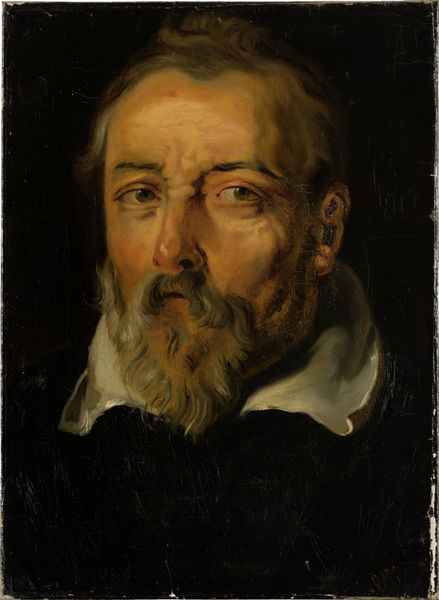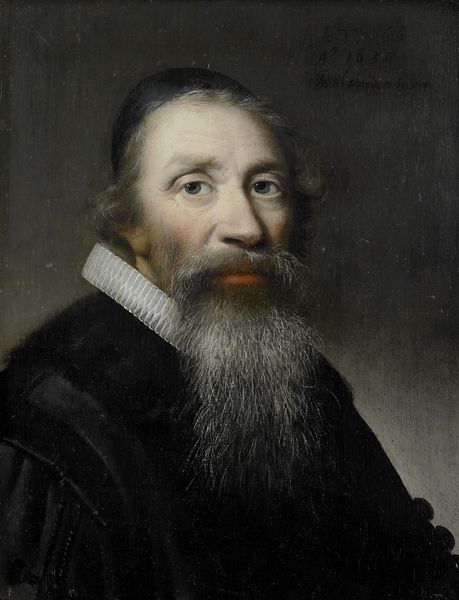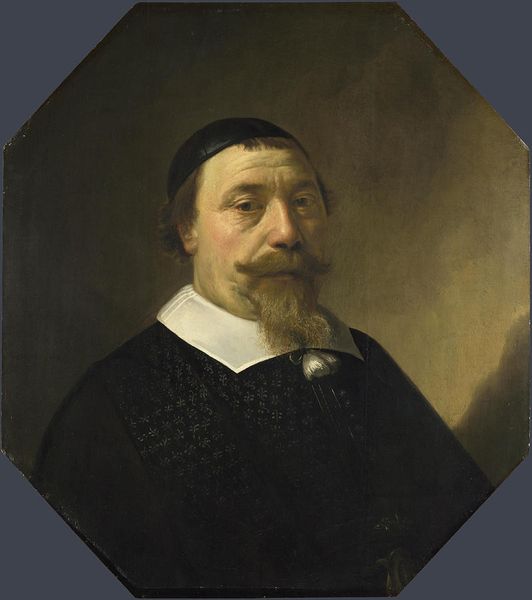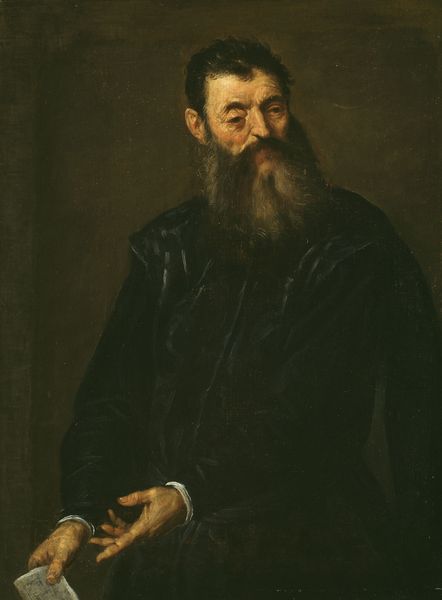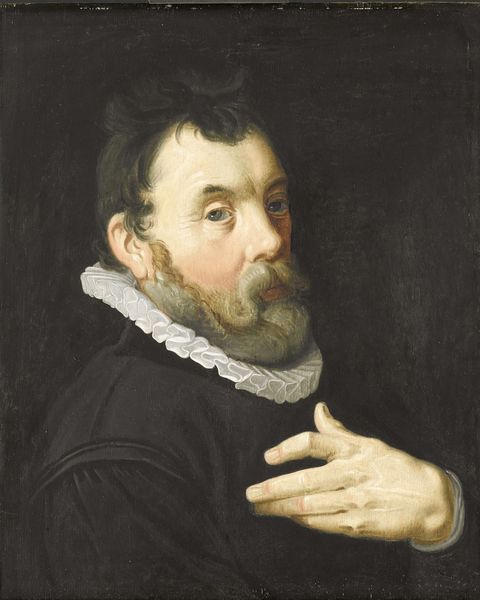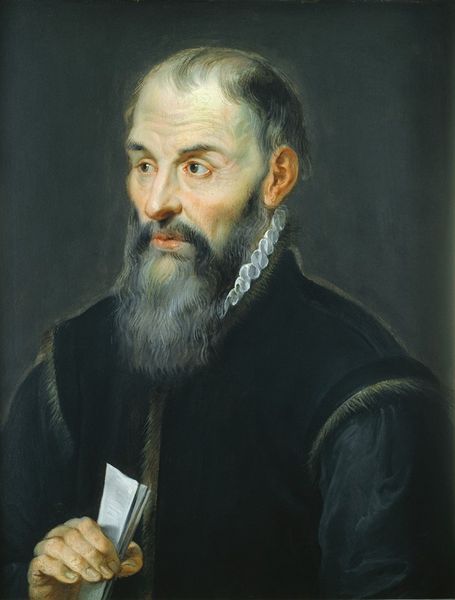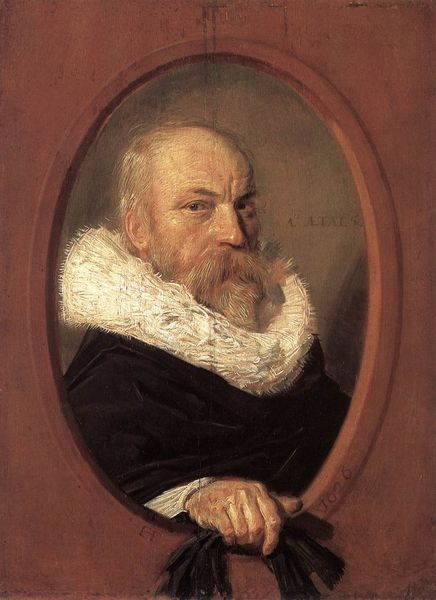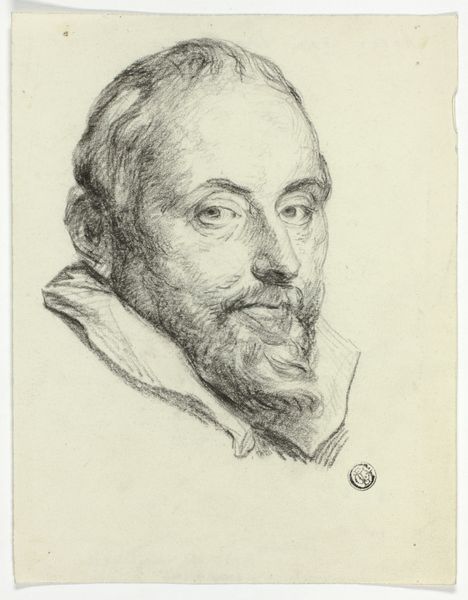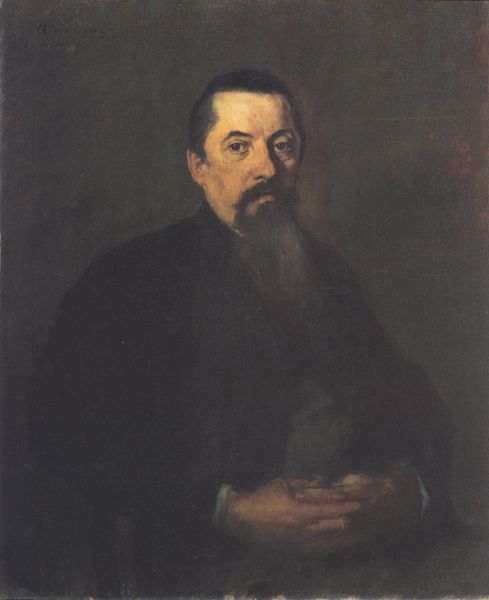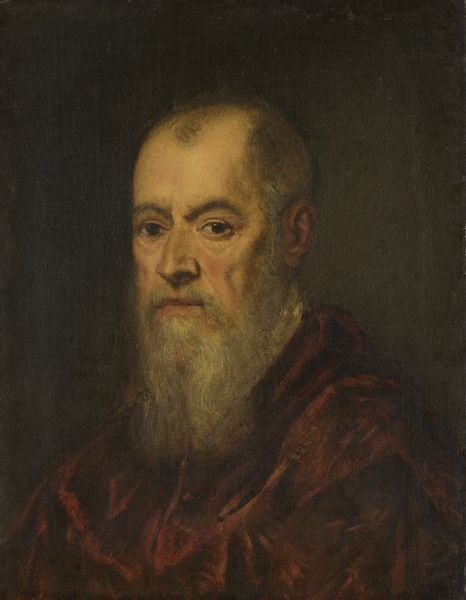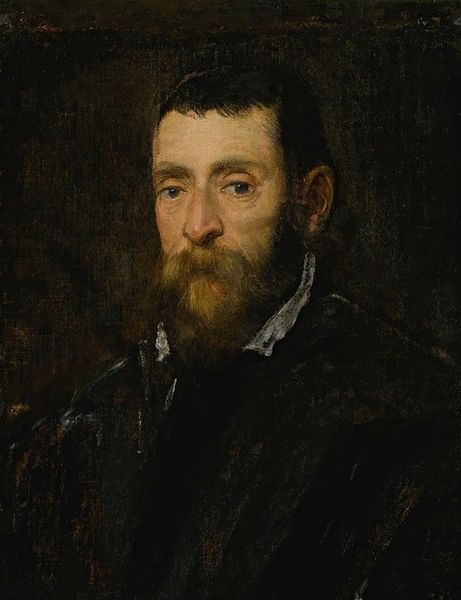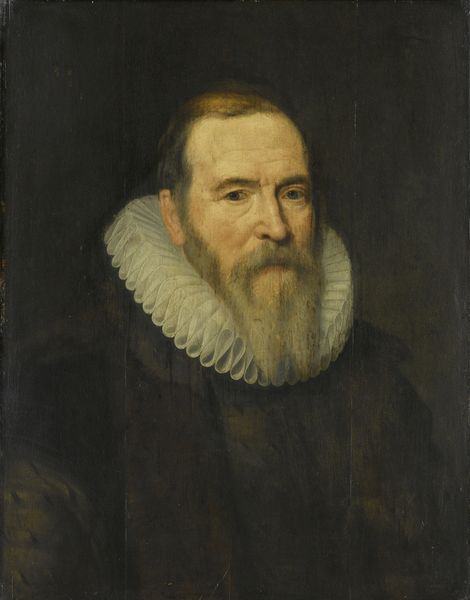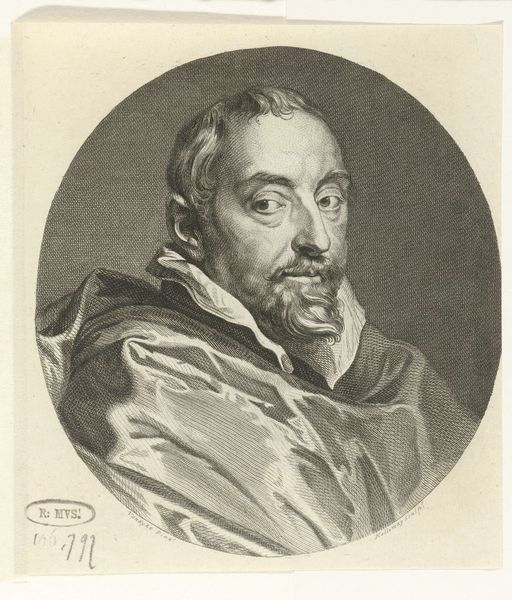
painting, oil-paint
#
portrait
#
baroque
#
portrait
#
painting
#
oil-paint
#
academic-art
Dimensions: 25 1/4 x 19 1/8 in. (64.1 x 48.6 cm)
Copyright: Public Domain
Curator: This striking portrait captures Peter Paul Rubens, painted likely between 1597 and 1640, and is credited to Frans Francken I. It currently resides in the collection of the Metropolitan Museum of Art. What are your initial impressions? Editor: The immediate effect is quite powerful. It's almost confrontational; the sitter's direct gaze pierces through the darkness. The dramatic chiaroscuro throws the face into sharp relief. The material presence feels very tactile as well; the heavy brushstrokes almost simulate the texture of skin and fabric. Curator: I agree, the gaze is compelling. And it’s worth noting the use of academic art styles from the baroque period. His solemn expression, coupled with his attire, speaks volumes. He's both present and timeless, representing established authority and the intellectual heft of the era. Editor: Note how the whiteness of his collar contrasts with the dark tunic; a semiotic representation, perhaps, of clarity of thought emerging from darkness and doubt. This work displays baroque’s interest in creating tension through opposing elements; indeed, the muted colors add an intriguing contemplative quality, drawing focus solely to the figure's face and hand. Curator: And look at the artist’s choice to render Rubens’ hand partially obscured, grasping his robe. Symbolically, this represents Rubens carefully navigating the creation process and exerting control over the narratives of this artistic milieu. It is self-conscious self-fashioning, wouldn't you say? A powerful figure consciously curating his image. Editor: The interplay of light and shadow across the form— the soft curves against angular forms—definitely underscores that tension you mentioned, the control you point to; but even though Rubens may have cultivated a carefully composed image, there is nonetheless, this inherent ambiguity within that presentation. Curator: Exactly! The painting captures him in that perfect moment of power and vulnerable reflection. His symbolic hand is never truly relaxed, signifying this inner emotional struggle despite the outward guise. Editor: It seems this piece invites continual unpacking, revealing nuances in technique as well as complex symbolic tension each time you return to it. Curator: Precisely, each viewing further reveals both artistic innovation, and Rubens’ continued iconic presence within both artistic practice and cultural memory.
Comments
No comments
Be the first to comment and join the conversation on the ultimate creative platform.
